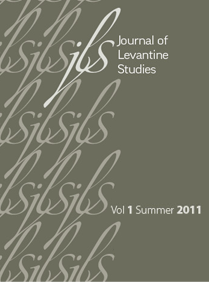-
Add to cartQuick view
“The Mediterranean Option”: On the Politics of Regional Affiliation in Current Israeli Cultural Imagination
The growing appeal of Mediterraneanism or “the Mediterranean option” (ha-opt’sia ha-yam tikhonit) as it is often referred to in Israel, can be at least partially understood in relation to the Oslo peace negotiations and their promise of replacing Israel’s isolated position in the region with a model of economic, political, and cultural integration. Perhaps it was the apparent difficulties involved in reaching a peace agreement, rather than the promise of peace itself, that drove many Israelis, including key public figures and intellectuals, to embrace the “Mediterranean option.”
This paper closely examines the ideological stakes involved in the intellectual and cultural endeavors of making Israel “Mediterranean.” What, I ask, is the appeal of Mediterraneanism for Israelis at this particular time and juncture? How is it that an ethno-national culture, which for the most part has until recently rejected or ignored the Mediterranean (as both “sea” and “region”) as a site of cultural identification, negating it in favor of ethno-national territorial centrality, has suddenly so embraced the sea and its regional promise? And more precisely, what does this promise entail? How does the Israeli-Palestinian conflict prefigure within it? Finally, and most central to my investigation, is the relationship between yam tikhoniyut as a geo-cultural regional affiliation, and mizrachiyut as an ethnic Israeli-Jewish classification. How are we to understand these different articulations of Israeli/Jewish locality and collective identity, and how are we to further understand their distinct rendition of politics vis-à-vis the Zionist national project?
$5.00Free!Add to cartQuick view -
Add to cartQuick view
Mahmoud Darwish: Poetry’s State of Siege
Free!Behar describes the cultural and literary strategy of Mahmoud Darwish, who experienced exile and migration more than once in his lifetime and who transferred the arena of the struggle to the region of memory. Denial and memory are at play in the “state of siege” and weigh on the poet’s ability to write. Behar sees the state of siege as evidence of the Israelis’ fear of Arab culture. Both besieger and besieged are trapped together in the same “state.” As Behar writes, Darwish reminds us of the common denominator shared by the Palestinians and the Israelis—the lack of a distinct, authentic culture.
Add to cartQuick view
- Home
- About JLS
- Issues
- Vol. 9 No. 1 | Summer 2019
- Vol 8 No 2 Winter 2018
- Vol. 8, No. 1: Summer 2018
- Vol. 7, No. 2: Winter 2017
- Vol. 7, 1: Summer 2017
- Vol. 6, Summer/Winter 2016
- Vol. 5, No. 2 Winter 2015
- Vol. 5, No. 1 Summer 2015
- Vol. 4, No. 2 Winter 2014
- Vol. 4, No. 1 Summer 2014
- Vol. 3, No. 2 Winter 2013
- Vol. 3, No. 1 Summer 2013
- Vol. 2, No. 2 Winter 2012
- Vol. 2, No. 1 Summer 2012
- Vol. 1, No. 2 Winter 2011
- Vol. 1, No. 1 Summer 2011
- Blog
- dock-uments
- Subscribe
- Submit
- Contact



